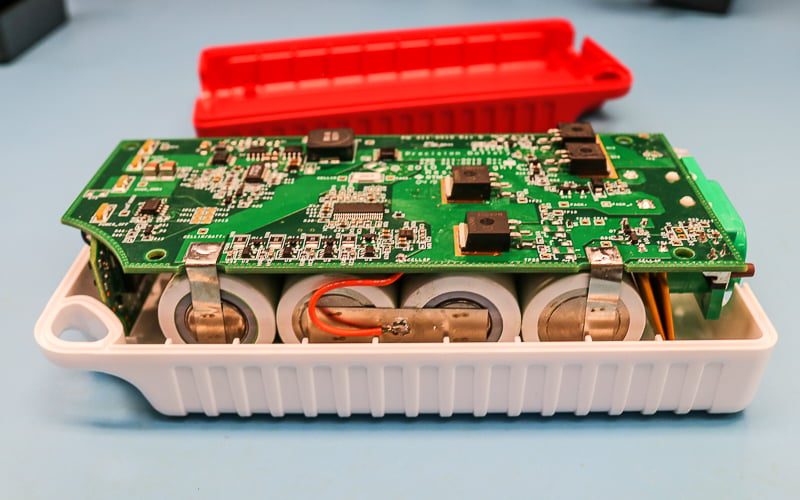Portable devices are everywhere. When thinking about the top portable devices that we use daily, smartphones, tablets, and laptops will dominate the list. Yet, there are numerous applications that rely on portable devices. Manufacturers of medical devices, military devices and even kid's toys rely on holder and mounting designs to secure batteries in portable devices. How the batteries are secured plays an important factor. These applications can experience a range of extremes such as shocks, vibrations, drops, and temperature fluctuations.
In addition, portable devices used in the medical industry will need to be tested and certified to ensure they can be used safely without endangering a patient's life. The design must also meet FDA regulations when the device is used in a medical-related environment. When designing how the battery will be secured in the device, there are several requirements and other factors to take into consideration.
Battery Holder/Enclosure Design
Due to the complexity of designing customized battery packs, every component of the holder must be taken into consideration so that the battery can provide the right amount of power to the application without having the power disrupted. Bringing in the engineering teams to decide on which phases of the battery design will be handled is entirely based on what sections of the application design will be done in-house and what parts will be finished by contract manufacturers.
Typically, if you are relying on an experienced build-to-print manufacturer to handle the battery pack design, then it is easier and more cost-effective for them to also provide the holders and mounts to secure the battery in the portable device. They will already have the battery design drawings and specifications available to provide the entire unit that can then be securely placed into the application. Yet there will also be instances where you may only wish the battery pack to be manufactured as the holder and mounts will be made in-house. So, bringing in the plastic design team will be necessary to create the enclosure to meet established requirements.
Determining Holders and Mounts Based on Battery Chemistries
The battery chemistries can impact how the pack will be secured in the portable device. While many holders and mounts can accommodate similar battery chemistries (such as alkaline batteries, nickel cadmium batteries, and nickel hydride batteries), lithium-based batteries require special consideration as the holders and packaging must meet shipping and transportation safety regulations set forth by government agencies, such as the Department of Transportation.

Custom battery pack secured in enclosure with lithium cells and battery management system (BMS).
Another factor to take into consideration is ventilation. Batteries will build up gases due to poor charging/discharging and zinc oxidation. Battery manufacturers will ensure that the design of the battery will allow for the gases to vent. However, if the enclosure or holder isn't designed to consider this venting, it can block the gas from escaping. So, the enclosure must take this aspect into consideration, such as using a gas-permeable enclosure material.
Spacing of the batteries in the portable device also plays an important factor and ties into the ventilation aspect of the enclosure. Securing the battery too close to other components in the device can have the circuitry impacted by radiation, electromagnetic interference (EMI), and heat. On the flip side, liquids may become leaked from the battery due to shorts, which can cause damage to the surrounding electronic components. Best design practices should always take into consideration the amount of spacing between the battery when it is secured in the portable device and near surrounding electronics.
Securing Batteries Based on Physical Size
Batteries come in a range of physical sizes. From the larger C-size and D-size batteries to the smaller coin-type batteries in very small devices (such as watches) the battery size will always dictate the way in which the battery will be secured in the device. While many battery chemistries will have similar holders and mounts, others will require specialized securement, such as lithium-ion and lithium polymer batteries that are designed into cans or pouches with tabs that act as the positive and negative terminals. In addition, the number of batteries in the pack will also dictate the type of holder that will be used, whether it is a 4-cell battery pack in a straight line or a 14-cell battery pack in two rows.
Holder configurations and designs will vary based on the physical size of the battery and the number of batteries that will be present. Common holder configurations include:
- Panel Mount: Panel mounts completely encapsulate the battery as it is designed to slide into a pre-existing cavity on the device. One side of the mount will usually sit flush with the surface of the device. It will use a screw-in or flange system to attach to the device.
- PCB Mount: Printed circuit board (PCB) mounts have pins along the perimeter of the holder that are soldered into the circuit board on the other side.
- Chassis Mount: Chassis mounts can be made from metal or plastic attached to a surface plate as they are affixed in place using tabs or through-holes in the casing.
- Wire Lead Mount: Wire lead mounts are battery holders that have two leads on one end; the other end will have attachments to secure the mount into the device.
- Surface Mounts: Surface mounts will sit on the surface of the device. Some come as small as watch batteries as the battery will slip inside. Others, such as through hole surface mounts, will have the battery snap into place. The front is usually open as the battery can be seen.
Many customers try to secure batteries in portable devices based on the specific battery manufacturer. However, manufacturers will have different physical sizes for the same types of battery chemistries; the size can differ just enough to be a little bit bigger or smaller. This issue creates problems for end consumers who may pick up the same battery chemistry from another manufacturer only to realize that the battery cannot be secured into the portable device. Following IEC/ANSI standards for the design of the battery cavity is recommended.
Material Considerations for Battery Contacts
While plastic and metal are common materials for battery pack enclosures, customers should also pay attention to the types of materials used for the contacts. The application and the environment can play a significant impact on the types of metals to use. Two metals that are dissimilar to each other may have a negative reaction and cause a variety of issues, including galvanic corrosion or high electrical resistance.
To boost electrical conductivity, often the contacts will be plated in nickel. The base material can come in a variety of metals, including stainless steel, copper, gold, silver, and lead. For some environments, such as high temperatures or humidity, gold contacts may be the preferred contact material.
Summary
There are many considerations for how to secure batteries in portable devices. Getting customized solutions can help to create the right battery packs chemistries and enclosures for your application. We will take into consideration how the portable device will be handled, used, and stored. Then we will determine the type of enclosure that will secure the battery, as we will include the foam spacing, ribs, RTVs, glues, and other necessary components to secure all the internal components.
Key Takeaways
- Secure battery holders are critical: Battery mounting designs must withstand shocks, vibrations, drops, and temperature changes, especially in applications like medical or military devices where reliability and compliance are critical.
- Chemistry-specific requirements: While many holders can accommodate common chemistries like NiCd, NiMH, or alkaline, lithium-based batteries require special enclosures to comply with safety and transportation regulations.
- Ventilation and spacing matter: Poor enclosure design can trap gases or position batteries too close to sensitive electronics, increasing risks of EMI, overheating, or leakage damage. Proper spacing and venting materials help maintain safety and performance.
- Holder configurations vary by size and use: Options include panel mount, PCB mount, chassis mount, wire lead, and surface mount holders. The right configuration depends on battery size, pack design, and the device’s physical layout.
- Material choices impact performance: Contact metals (such as nickel-plated copper, stainless steel, or gold) must be selected based on environmental and electrical demands to avoid issues like corrosion or high resistance, ensuring reliable conductivity.
















